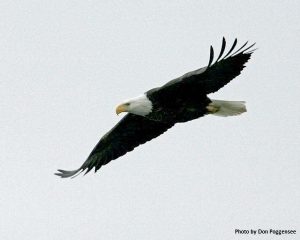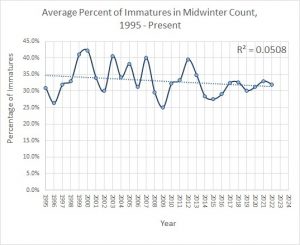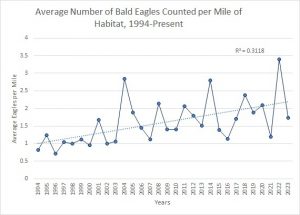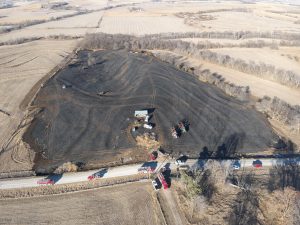CLICK HERE for the latest market quotes from the Iowa Agribusiness Network!
CLICK HERE for the latest market quotes from the Brownfield Ag News Network!
CLICK HERE for the latest market quotes from the Iowa Agribusiness Network!
CLICK HERE for the latest market quotes from the Brownfield Ag News Network!
(Radio Iowa) – Leaders of the Iowa Bicycle Coalition are on a road trip this week with the goal of visiting 99 Iowa bike shops, giving a nod to Iowa’s senior U-S senator in calling this a “Full Grassley Tour.” Coalition executive director Luke Hoffman says they’re striving to highlight and support local bike shops and their economic impact while generating interest in cycling, even as winter looms. “The Iowa Bicycle Coalition, being the statewide nonprofit organization around bicycle advocacy and shared safe roadways,” Hoffman says, “we, to that end, want to talk to cycle groups, bike shops, bike-friendly businesses about how we can be building community together.” As part of the tour, Hoffman says they’re meeting with cycling enthusiasts, which includes those who love riding in the cold weather with specially-equipped winter bikes. All of the visits center around local bike dealers and mechanics.
“It’s about doing local bike rides, visiting the bike shops,” he says, “and then talking to those business owners about how they can be part of our advocacy work, as well, in the legislative session.” Hoffman says the coalition is working to promote safe and accessible bicycling in Iowa through education, events, better policy, and growing a community of supporters. He says this week-long tour is part of that vision, to make bicycling in Iowa safe, enjoyable, and accessible for all.
“We’re doing it because we want to start something new and unique and that’s Support Your Local Bike Shop,” Hoffman says. “This time of the year is a time where bike shops typically see a little bit of a dip in business just because it’s not the summer months, it’s not close to RAGBRAI. So we want to show them some love ahead of the holiday season and let people know they can support their local bike shop this time of the year.”
The annual Iowa Bike Expo is scheduled for next month at the Iowa Events Center in Des Moines, one of the Midwest’s largest one-day bike shows. Later that same day, January 27th, will be the RAGBRAI Route Announcement Celebration.
(Atlantic, Iowa) The City of Atlantic’s Board of Adjustment, Monday evening, denied a conditional use permit request from the owner of the Cass County Animal Clinic.
The permit would have allowed Dr. Erin Conrad-Schwarte to build a vet clinic at 2309 Whitney Street (an East 22nd St. Parcel). Dr. Schwarte purchased the Cass County Animal Clinic from Dr. Larry Victora in May, 2020. Since then, she has provided veterinary services for all sorts of animals. She wanted the parcel to board dogs and cats and for an outdoor dog run that would have been used during business hours. Schwarte told the Board any livestock visiting the clinic would have been contained within the fenced area on the south side of the clinic and within the clinic, and they would not normally be housed on the property overnight.
The proposed project, however, would have been in a low-density, single-family residential district. The fact that the area is zoned residential, prompted many residents in the area to attend the meeting and voice their opposition to the permit, citing safety and comfort concerns.
Taking those concerns into consideration, the Board moved to decline the conditional use permit.
(Radio Iowa) – A veteran central Iowa beekeeper will offer a free, online course in beekeeping starting next month for Iowa youth between the ages of 13 and 16. Julia McGuire heads the Des Moines Backyard Beekeepers and she has ten hives in Madison County. McGuire says the live course in Beekeeping 1-0-1 will start January 30th, teaching all about these important pollinators and how to care for them.
“We’ll cover basic bee biology, and it goes through site location for your beehive, the confluence of the beehive,” McGuire says, “and then we spend a lot of time learning how to work the bees once they arrive in April.” McGuire has kept bees since 2011 and has taught beekeeping for 11 years. The course will run every Tuesday for six weeks.
“There’s also a couple opportunities where we will go and meet in person, so we can work with bees all together,” McGuire says, “so I think a lot of the success in beekeeping is that hands-on work that you might get with a mentor.” For many, beekeeping is a hobby, but McGuire says it can also become a profitable business. She sells honey from her hives, but says there’s another important component to beekeeping — saving swarms.
“I get a lot of swarm calls every April and May from people who have a swarm of bees, or bees actually living and have been in the side of their house or whatever for years,” McGuire says. “I get a lot of phone calls like that. There’s just more demand than there is supply of people who can go get those.” She estimates it may cost around 500-dollars to start a basic hive. In addition to the free Beekeeping 101 course, there’s a youth bee camp planned for May of 2024.
The deadline to sign up for the course is December 31st at: https://forms.gle/h3Lh2zvkwRgwNZnY7
(Des Moines, Iowa) – Iowa Governor Kim Reynolds has signed an extension of the proclamation relating to the weight limits and transportation of grain, fertilizer, and manure.
The proclamation, issued today (Monday, 12/11/23) is effective immediately and continues through January 11, 2024. The proclamation allows vehicles transporting corn, soybeans, hay, straw, silage, stover, fertilizer (dry, liquid, and gas), and manure (dry and liquid) to be overweight (not exceeding 90,000 pounds gross weight) without a permit for the duration of this proclamation.
This proclamation applies to loads transported on all highways within Iowa (excluding the interstate system) and those which do not exceed a maximum of 90,000 pounds gross weight, do not exceed the maximum axle weight limit determined under the non-primary highway maximum gross weight table in Iowa Code § 321.463 (6) (a) and (b), by more than 12.5 percent, do not exceed the legal maximum axle weight limit of 20,000 pounds, and comply with posted limits on roads and bridges.
See the proclamation here.
(Des Moines, Iowa) – Iowa anglers can buy the Missouri and Big Sioux River paddlefish license and tags starting Dec. 15 through Jan. 7th. The Iowa DNR says you can buy your special paddlefish license and tags on the Iowa DNR online licenses sales website at https://gooutdoorsiowa.com. A resident license sells for $25.50 and a nonresident license is $49. You must also have a valid Iowa fishing license. You can buy up to two tags – one from Dec. 15 to Dec. 31 and an additional tag from Jan. 1 to Jan. 7, or two tags if you didn’t buy one in December. A limited number of paddlefish licenses are available – 950 resident and 50 nonresident.
The license, harvest tag(s), and regulations will be mailed to purchasers in mid-January. Purchasers will be asked to complete an electronic survey to help the Iowa DNR evaluate the success of the paddlefish season. Please complete the survey whether you harvested a paddlefish or not. The Iowa DNR is always working to improve the paddlefish season for anglers; any input provided is considered and is greatly appreciated.
The Missouri and Big Sioux River paddlefish season opens Feb. 1 and runs through April 30. For more information about Iowa’s special paddlefish season, visit the DNR website at www.iowadnr.gov/paddlefish – click on Missouri River Paddlefish Season and Regulations.
(Des Moines, Iowa) – Iowans can buy 2024 resident hunting, fishing and other licenses on Dec. 15. Licenses purchased for 2023 expire on Jan. 10. The Iowa DNR says the menu of license options includes the popular Outdoor Combo annual resident hunting/fishing/habitat combo license for $55; the Angler’s Special three-year fishing license for $62; and the Hunter’s Special three-year hunting license with habitat included for $101. Also available is the Bonus Line option for $14 letting resident and nonresident anglers to fish with one more line in addition to the two lines allowed with the regular fishing license. Upgrade your paper license to a durable hard card with custom art from Iowa artists for only $6.
Download the GoOutdoorsIowa mobile app for iPhone and Android devices to buy and access your license information, no matter where you are. Sync your hunting and fishing licenses on the app to show in the field. You may download multiple customer licenses to offer one secure digital license document location for families, groups, and more. Licenses are available at 650 locations across the state, and on the DNR website at www.iowadnr.gov/GoOutdoorsIowa.
Hunting and fishing are often enjoyed with family and friends. A fishing or hunting license makes a great stocking stuffer.
(Iowa DNR News) – Every year over a hundred volunteers and DNR staff head out to spy on Iowa’s Bald Eagles. Thankfully, according to the Iowa Department of Natural Resources (DNR), the eagles usually don’t mind and official are able to get valuable data that helps the DNR to evaluate how the birds are doing in the state.
Volunteers help with two surveys: The Bald Eagle Midwinter Survey and the Bald Eagle Nest Monitoring Survey. The midwinter survey takes place in early January each year and requires surveyors to drive a standardized route, counting all eagles seen along the way. During the nest monitoring survey, volunteers collectively watch between 250 and 350 nests around the state and report on a nest’s activity and success in producing and fledgling eaglets.
Some important background to have before reading this year’s results, is that 2022 was the worst nesting season in many years for Iowa’s Bald Eagles. For the first time in the history of the survey the average number of young fledged per nest dropped below the important threshold of 1; only an average of 0.88 young were fledged per nest. This is thought to be the result of the Highly Pathogenic Avian Influenza outbreak last summer. A total 1,663.5 miles of waterway were surveyed in January of 2023 and over 2,900 eagles were counted using these waterways! That works out to almost 2 eagles per river mile surveyed. The most eagles were counted on the Mississippi and Des Moines Rivers though the highest density (eagles per mile) was on the Iowa River. One of the important things we keep an eye on, as it is a good indicator of population health, is the proportion of the count made up of immature eagles. Since the survey started in 1991, that proportion has hovered around 30% and this year was consistent with that at 32%.
 From late winter to summer, another army of volunteers around the state monitored 329 bald eagle nest sites. They observed from a distance and recorded whether the nest was active and, if so, if it was successful fledgling eaglets. A total of 66% of the active monitored nests were successful, 12% failed (the remaining had an unknown outcome). There was an average of 1.77 fledglings produced per nest which is one of the highest rates in recent years. This represented a very good recovery after 2022’s poor nesting season! In addition, there was one very surprising observation – a nest that fledged 4 young!
From late winter to summer, another army of volunteers around the state monitored 329 bald eagle nest sites. They observed from a distance and recorded whether the nest was active and, if so, if it was successful fledgling eaglets. A total of 66% of the active monitored nests were successful, 12% failed (the remaining had an unknown outcome). There was an average of 1.77 fledglings produced per nest which is one of the highest rates in recent years. This represented a very good recovery after 2022’s poor nesting season! In addition, there was one very surprising observation – a nest that fledged 4 young!  Usually, bald eagles only lay 1-3 eggs with the most common being 2 fledglings per nest. The DNR says “We had never even heard of a nest hatching 4 young, much less raising them all to fledgling! However, a very diligent nest monitor was able to capture this very rare phenomenon. Congrats to the parents of the fab four for a job very well done!”
Usually, bald eagles only lay 1-3 eggs with the most common being 2 fledglings per nest. The DNR says “We had never even heard of a nest hatching 4 young, much less raising them all to fledgling! However, a very diligent nest monitor was able to capture this very rare phenomenon. Congrats to the parents of the fab four for a job very well done!”
According to the Iowa DNR, this year was characterized by a return to normal after a year of extremes in 2022. The midwinter survey count was just below the average and the nest monitoring survey had an average number of successful nests and a high number of young produced. Taking into account the success rate, the overall number of known active territories and the average number of young produced by nest, a possible 720 young eagles were fledged by Iowa’s nests!

 This paints a picture of a resilient and healthy bald eagle population in Iowa, which is great news for our nation’s symbol! For now, officials will continue to monitor both wintering and breeding eagles in order to help monitor the Bald Eagle’s recovery. The DNR wants to issued “A huge and very heart-felt thank you to the many volunteers and staff who help to make this monitoring possible!”
This paints a picture of a resilient and healthy bald eagle population in Iowa, which is great news for our nation’s symbol! For now, officials will continue to monitor both wintering and breeding eagles in order to help monitor the Bald Eagle’s recovery. The DNR wants to issued “A huge and very heart-felt thank you to the many volunteers and staff who help to make this monitoring possible!”
(Radio Iowa) – Goat milk production set for is the focus of a seminar by the Iowa State University Extension Department on Saturday at Dordt College in Sioux Center. Extension Dairy specialist Fred Hall says Iowa is third in the country in dairy goat production, but it’s hard to calculate how many pounds of milk are produced. “We had about 270 herds milking goats. And the last report I’ve seen we’re down to about 170,” he says. “Now because the marketplace is diverse, we really don’t have a good handle on how many pounds actually being bought and processed.” Hall says dairy goats produce between four to four-and-a-half pounds of milk each day, compared to the 80 to 95 pounds of milk or more produced by the average dairy cow. He says the dairy goat production is distributed in much the same way as the dairy cow industry.
“If you look at Eastern Iowa, we’ve got several milk buyers there. So we see a lot of commercial dairies there, along the Mississippi River,” Hall says. Goat milk production is more localized in southern Iowa. “If you go south of (Highway) 20, you see a large percentage of the producers are Amish. So they sell to Kalona. And it really fits the family lifestyle,” Hall says. “When you come to the western side of the state, we currently don’t have a milk market for goat’s milk out here.”
Hall says western Iowa does see a lot of products made and sold from the goat milk. “They make cheese and lotions. You know, I jokingly and lovingly say, they’re my lotions and potions producers,” he says. Hall says smaller producers will have around 25 goats, while the largest has 350. He says one of the draws of milking goats is the price for a pound of milk allows you to do well with a small herd.
“Cow milk right now is worth about 18-50. And goat milk is worth about 32 (dollars). So they can be profitable because the milk is a lot more valuable. And goats a smaller, more efficient, eat less produce more,” he says.
Hall says the seminar will address some of the key issues facing goat producers and try to answer any questions they have. The event runs from 9:30 a-m to 3:15 p-m., Saturday.

 Farmers with three disk devices also assisted crews on scene. The Montgomery County Emergency Management Agency was on-hand with a drone, to assist fire officials in having a better over view of the scene, and to search for hot spots. The cause of the fire was deemed a brush pile that was started last week during the snow.
Farmers with three disk devices also assisted crews on scene. The Montgomery County Emergency Management Agency was on-hand with a drone, to assist fire officials in having a better over view of the scene, and to search for hot spots. The cause of the fire was deemed a brush pile that was started last week during the snow.
(Radio Iowa) – A report on national farmland values shows prices are holding their own despite several down economic issues. Peoples Company president Steve Bruere says 2023 has been a transitional year for farmland after seeing so many transactions in 2022. “As the interest rates have started to move up in 2023, there’s a lot of folks I think, anticipated that farmland values would soften a little bit in the higher interest rate environment. And what’s happened as farmland is performed really well over the last year,” Brewer says.
He says their report is not a survey, but reviews all types of sales information and other factors. Iowa’s cropland has held its own along with the rest of the country. “Iowa values were relatively flat to stable and 2023. But I’ll tell you the last two or three weeks, there’s been over one-thousand acres that have sold in Iowa that have brought over 20-thousand (dollars) an acre,” he says. “So there’s plenty of ammunition out there and there’s still some really big numbers floating around.” The report shows Iowa cropland values overall up eight percent this year. Bruere says the value of cropland can’t just be viewed based on the return you get from farming the ground.
“I think that’s one of the misnomers on farmland is a lot of times people look at farm in Iowa and say, well, that’s a two or three percent return. Well, the last 20 years Iowa farmland has averaged about seven percent appreciation. And so what this report does is aggregate those two returns,” he says. Bruere says the ups and downs of corn and bean prices are only a part of figuring the value of farmland. “It’s much more than just interest rates and commodity prices. I think that’s what shocked people about this year, if you were looking solely at commodity prices and solid interest rates, you might think that land values are softened a little bit,” he says. “But when you when you start to understand what’s happening in the renewable space with wind and solar and carbon, and what you’re seeing with advances and yields and whatnot, that long term vision for farmland is pretty bullish.”
And there’s a limited number of acres to buy as he says only about one percent of all farmland in the country hits the open market on an annual basis. “There’s very little of it for sale, it’s a generational asset. So when it comes time to buy, something, you are really buying the future revenue stream,” he says.
You can find out more about their land value report at the Peoples Company website.